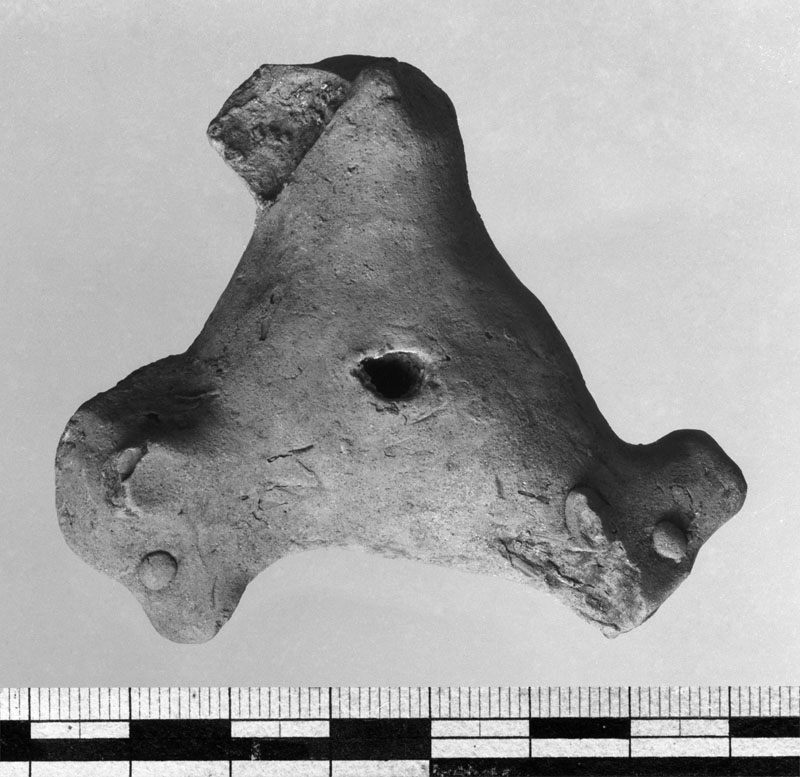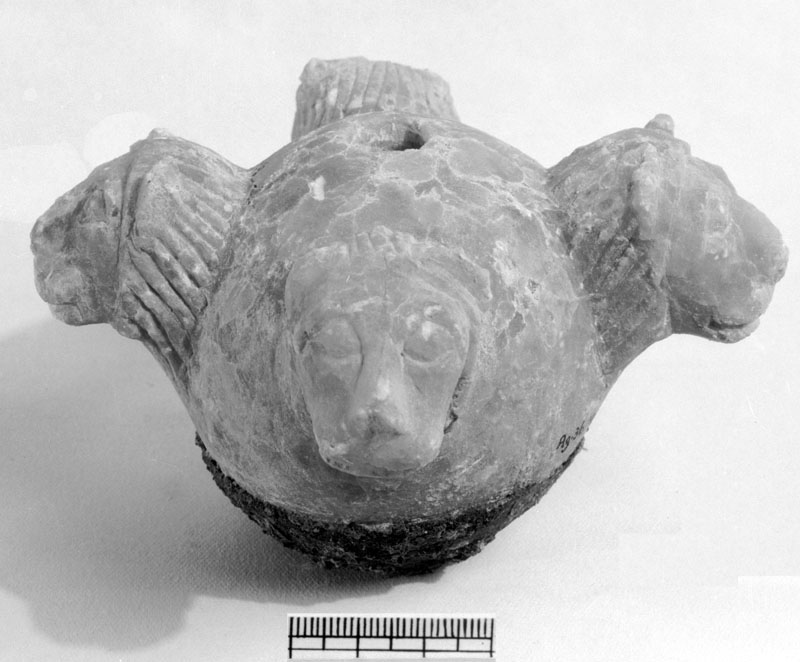Ancient Fidget Spinner? Nope — That's a Weapon from Mesopotamia

A 4,000-year-old Mesopotamian artifact that looks just like a fidget spinner and that a museum labeled as a "spinning toy" for 85 years is actually — unexpectedly — an ancient weapon, curators told Live Science.
Museum curators noticed the error while enhancing the Mesopotamian Gallery at the Oriental Institute of the University of Chicago, where the triangle-shaped, baked-clay artifact is labeled as a "spinning toy with animal heads" from the Isin-Larsa period of Mesopotamia.
But though the object may look like a modern-day fidget spinner, museum curators recently realized that it was something else entirely: a mace-head. [10 Modern Tools for Indiana Jones]
The artifact dates to between 2000 B.C. and 1800 B.C. and was made in the ancient site of Tell Asmar, located in present-day Iraq. When researchers first published an analysis of the object, in 1932, they suggested it was a plaything, Kiersten Neumann, a curator and research associate at the Oriental Institute, told Live Science in an email.
"The excavators recognized that the object was unique, and they speculated it might be rotated and used in 'astrological divination,' suggesting the animals represented were a bull, [an] ibex and [a] lion," she said.
But several clues, newly reviewed by curators, support the mace-head hypothesis, Neumannsaid.
It's unusual for a mace-head to be made from baked clay; typically, they're crafted out of stone. But the object looks like other identified mace-heads, and its location is further evidence of its original purpose, she said.
Sign up for the Live Science daily newsletter now
Get the world’s most fascinating discoveries delivered straight to your inbox.
"That our baked clay example was found in the area of a temple also supports that it is a mace-head, since they were considered weapons of the gods in the second millennium B.C.," Neumann said.

Archaeologists have previously found toy artifacts from ancient Mesopotamia, including baked clay rattles, whistles, animal figurines and wheeled carts, but this object was likely not fashioned for the whimsy of children, Neumann said.
So why did museum researchers call it a toy in the first place?
"Our ideas change over time," Jean Evans, chief curator at the Oriental Institute, told Live Science.
The ancient weapon will soon be on display with other objects excavated from Mesopotamian temples, including votive statues, plaques, vessels and other mace-heads, Neumann said. But that hasn't stopped the Twitterverse from getting a kick out of the fidget spinner look-alike.
When the fidget spinner craze took off, people tweeted a picture of the artifact, and just on Monday (July 31), Arielle Pardes, a senior associate editor at Wired, even jokingly tweeted, "Proof that there are no original ideas anymore. "
Original article on Live Science.

Laura is the archaeology and Life's Little Mysteries editor at Live Science. She also reports on general science, including paleontology. Her work has appeared in The New York Times, Scholastic, Popular Science and Spectrum, a site on autism research. She has won multiple awards from the Society of Professional Journalists and the Washington Newspaper Publishers Association for her reporting at a weekly newspaper near Seattle. Laura holds a bachelor's degree in English literature and psychology from Washington University in St. Louis and a master's degree in science writing from NYU.









